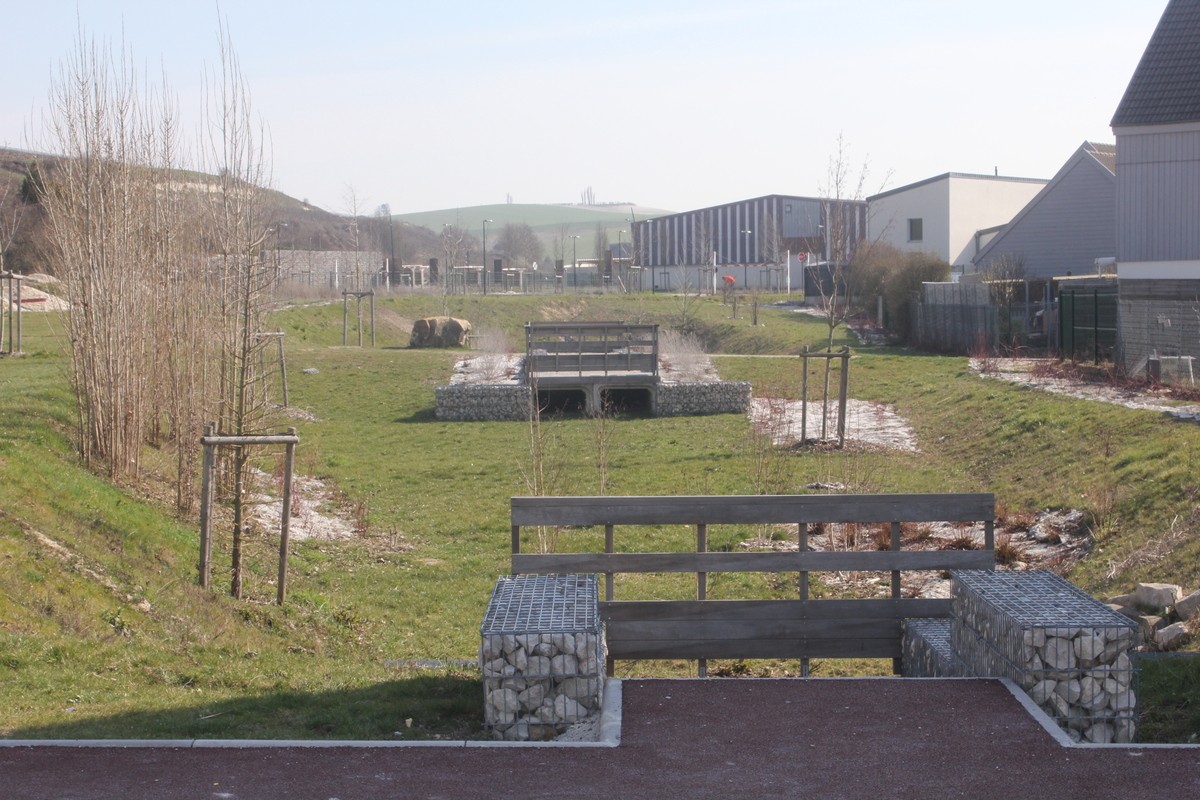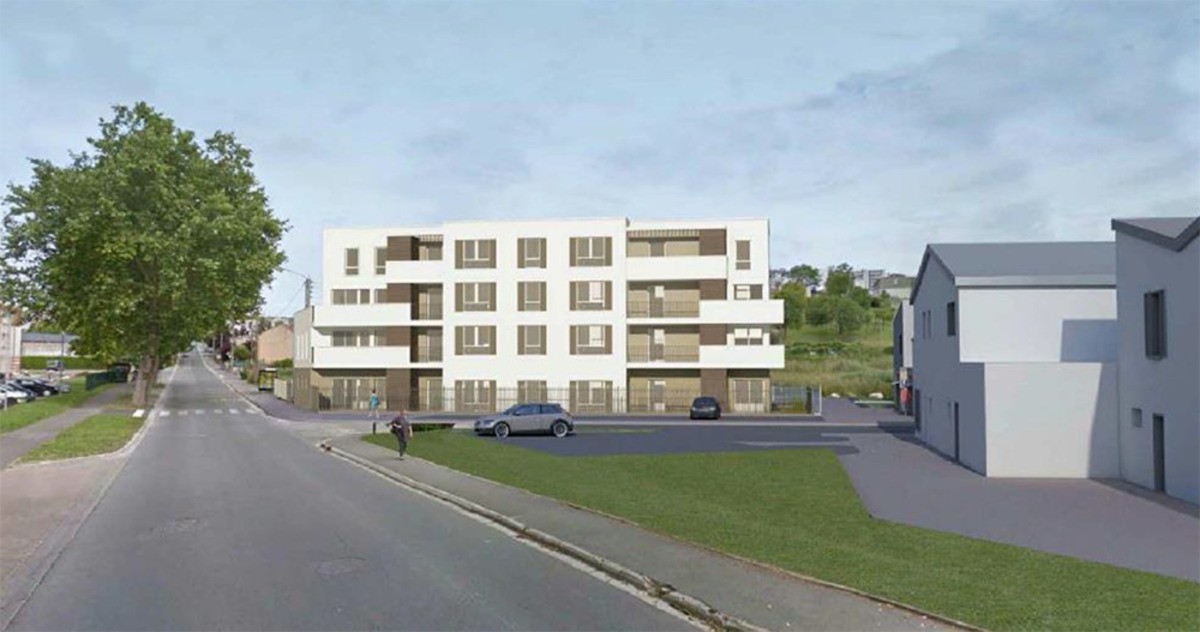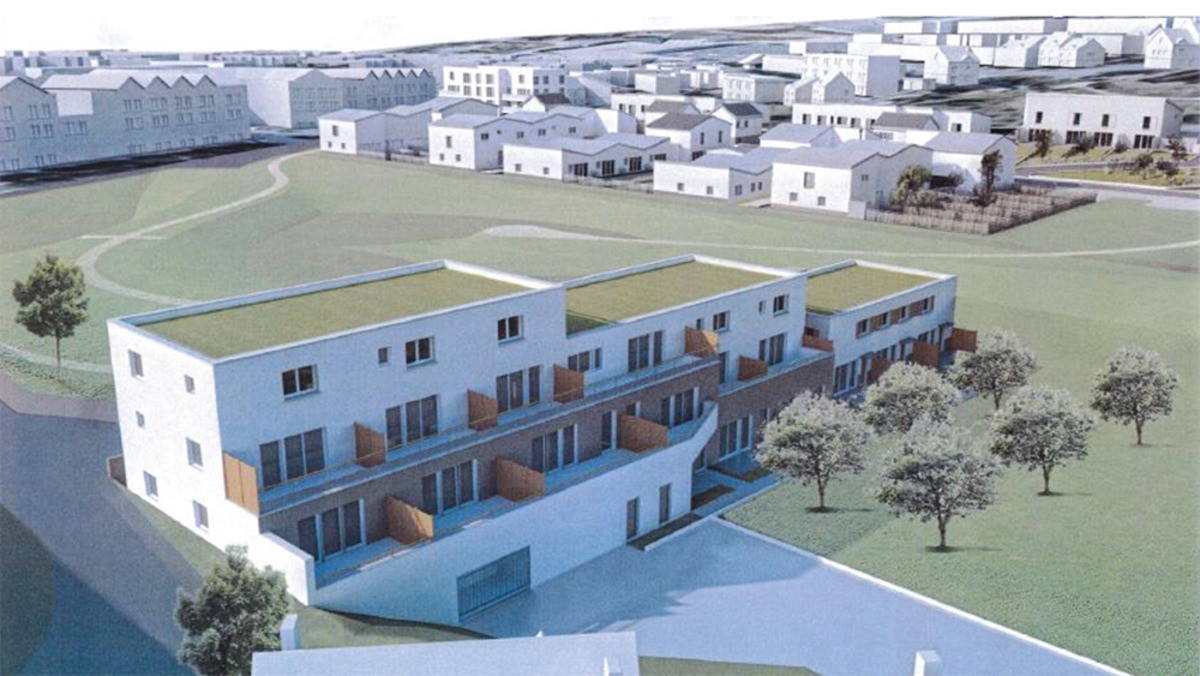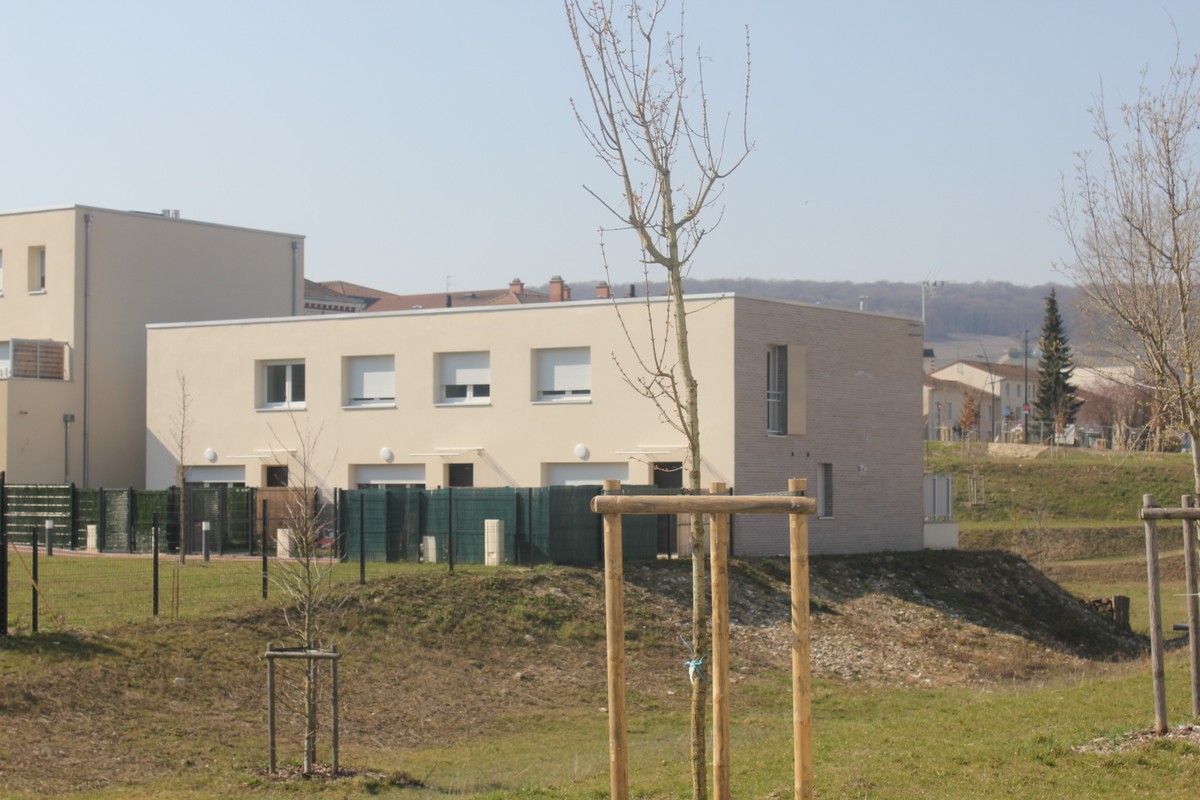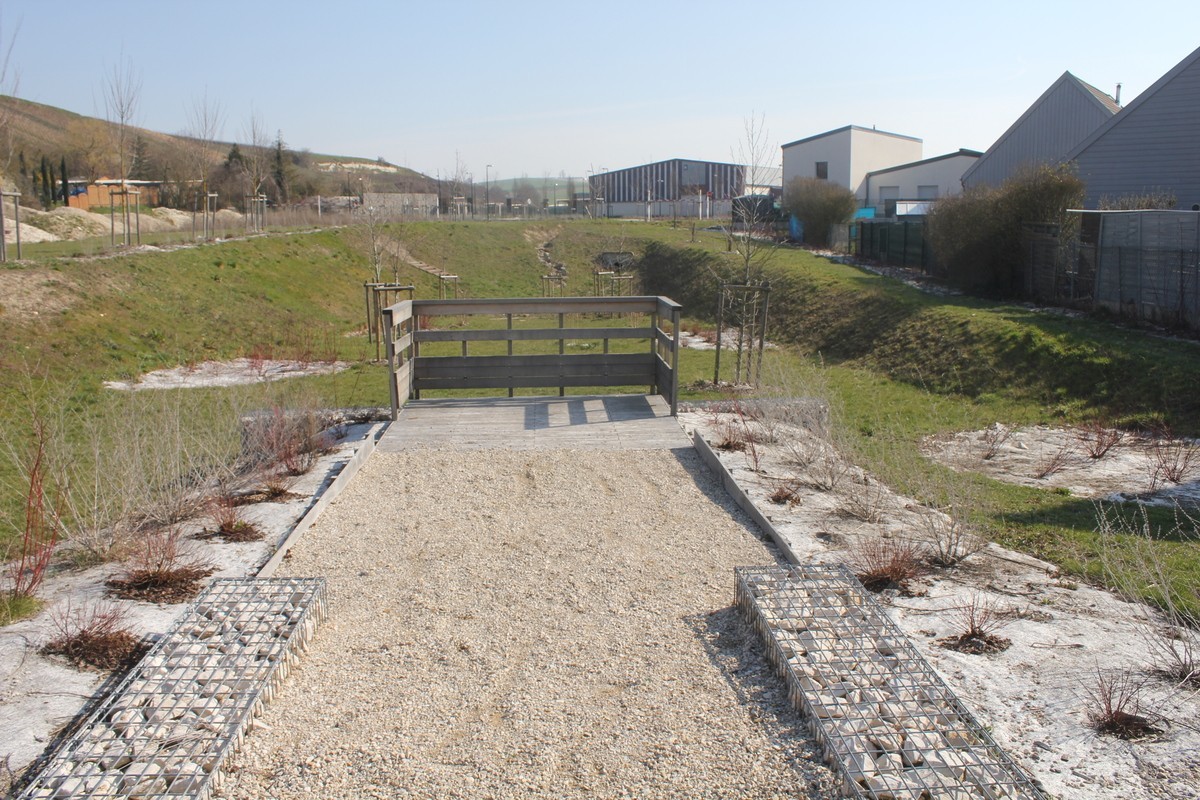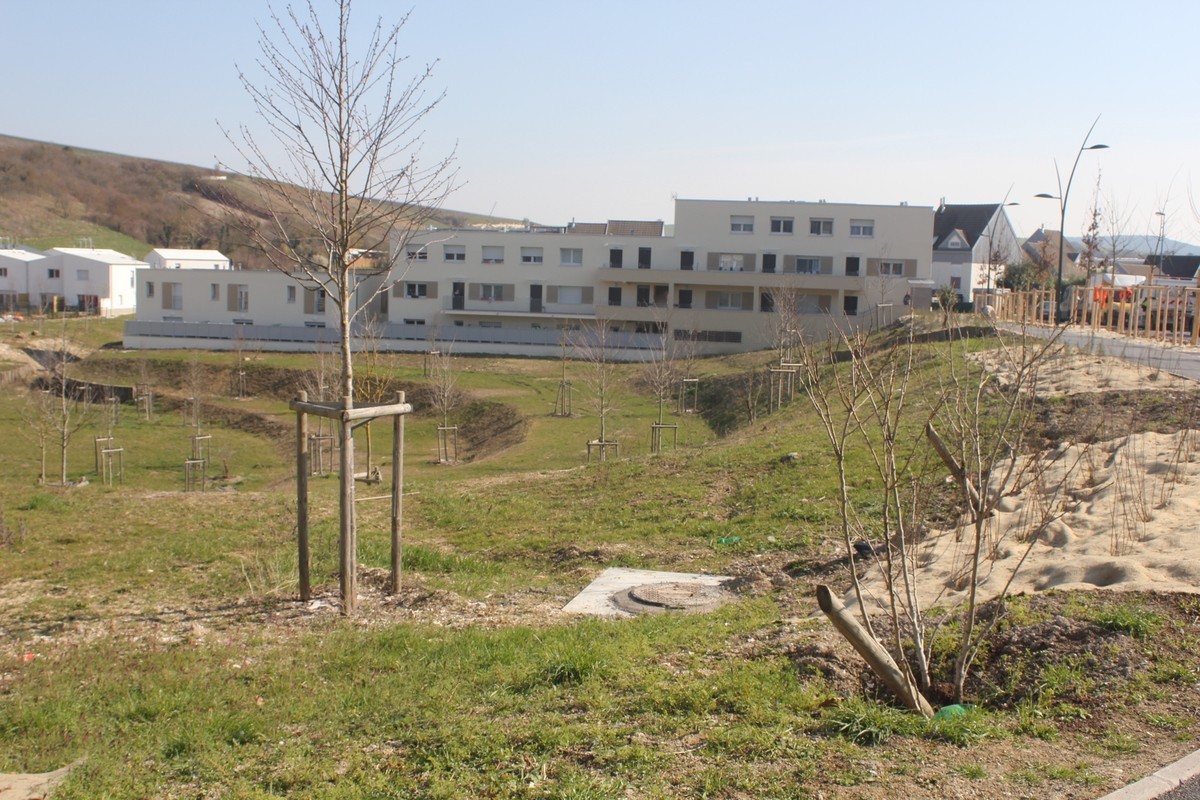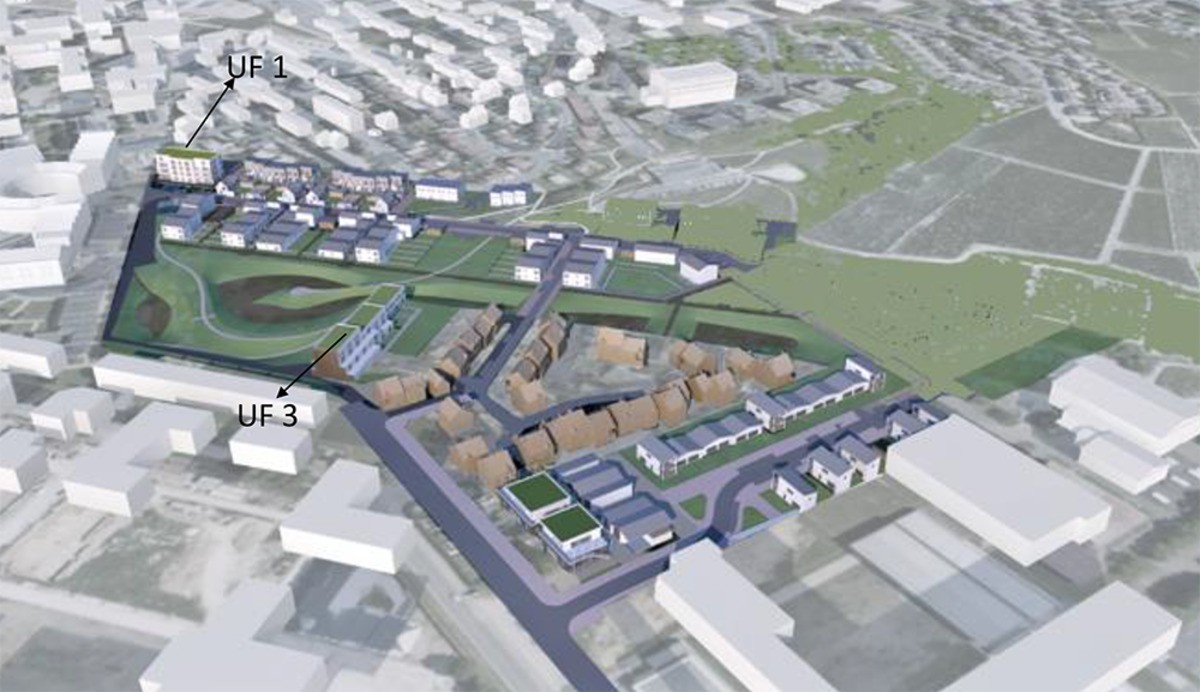Rosemont district in Epernay
Last modified by the author on 19/03/2021 - 16:25
- Address 1 - street : QUARTIER ROSEMONT 51200 EPERNAY, France
- Population : 800 hab
- Starting year of the project : 2010
- Delivery year of the project : 2021
Certifications :
-
6 ha
In 2007 starts the first restructuring studies around the city of Epernay, the town community of Epernay, ANRU two social landlords: The Champagne and Plurial Novilia roof and locals alike.
The project builds on the demolition of 138 existing homes and the construction of 180 apartments and facilities of outdoor spaces on 6 hectares with the purchase of 3.5 hectares of wasteland by Plurial Novilia.
Relying on the city's PLU, the actors take into account the dimension of sustainable development for the restructuring of the district. They call on the town planning / architecture / landscape firm and articulates the project around 4 themes:
- Rainwater management, the source of the main problems
- Make the district a "garden district", structure and qualify new public spaces
- Diversify urban forms, strengthen the quality of housing
- Open up and develop road and soft continuities
Programme
- Housing
Project progress
- Delivery phase
Key points
- Quality of life
- Mobility
- Biodiversity
Approaches used
- Ecodistrict national label
Certifications
- Autre
Photo credit
Alex Marcilly
Type of territory
As a basin-like district located under the hillsides, this historic district of Epernay is subject to frequent flooding
Climate zone
[Cfb] Marine Mild Winter, warm summer, no dry season.
Land price
1 562 €/m²
Number of residential units
180
Number of social housing units
180
Project holder
Project management
Project stakeholders
Becard map
Urbanism agency
An opening up of the neighborhood but also a diversification of the habitat of Rosemont. The developer had to create a functional mix with respect for the existing environment and by developing new public spaces.
Quality of life / density
In order to limit urban sprawling and by relying on the city's PLU, instead of the 138 deconstructed housing units, 180 housing units will be rebuilt in four phases, thus bringing the gross density to 60 housing units per hectare.
Culture and heritage
Before the Second World War, the Beausoleil district was occupied by allotment gardens which gave way after in 1947 to metal barracks called “tonneaux” or “Cités Nissen”.
In the 1970s, these “barrels” completely disappeared to see the birth of 138 social housing units. Semi-collective housing extended over 2.5 hectares, made up of houses with 2 to 4 apartments.
Families very quickly take ownership of the place, forging strong bonds of belonging to the neighborhood, in this social environment.
After several rehabilitations between 1989 and 2000, regular floods (caused by runoff from watersheds) reveal design problems. Due to inappropriate materials and the lack of public space, the district no longer meets the needs for comfort and safety.
The Rosemont project was then born in 2007 with the objective of making the district part of sustainable development by integrating the neighboring district of Quebec Montreal in the renovation and the goal of the resilience of the Beausoleil district.
Social diversity
During the many public meetings, the subject of social diversity had been widely discussed and it was one of the priorities of the inhabitants but also of the authorities.
The residential route had to be ensured by the diversity of the accommodation offered.
Senior or family residence, PRM accommodation, single-parent family or large family, all customer segmentation is taken into account.
Ambient air quality and health
2 hectares of riparian park are created by promoting local essences and melliferous species for the beds (pollinating insects).
Grassing of undeveloped surfaces, greening of roof terraces and shared gardens: the creation and preservation of biodiversity takes shape in all these actions implemented in the Rosemont district.
The significant presence of water and green spaces in the neighborhood also tend to preserve air quality and quality of life.
Local development
In 2007 from the start of the study of the project, the working committees bringing together the City, the community of municipalities, the donors and the OPCU mission, ensure the financial feasibility of the project and put forward the local economy and the absolute. need to carry out the project with a cooperation agreement on employment and training with State services and local public actors. The goal is to promote local hiring.
The two social landlords, toit champenois and Plurial Novilia, as well as the city of Epernay are setting up social integration contracts.
Functional diversity
The specifications drawn up by the City and the community of communes and the public meetings provided for opening up the neighborhood but also a diversification of the habitat of Rosemont, and the creation of public spaces and green spaces.
The developer had to create a functional mix while respecting the existing environment and developing new public spaces.
Thus within the district one distinguishes several architectural types ranging from the studio to the large apartment, from the house of building, and from the social housing. This diversity of the offer opens up the possibility for single people or households to find accommodation.
It should be noted unfortunately that during the progress of the work that the housing for home ownership has been abandoned to the profile of rental housing.
The development of the main roads: Chemin de Beausoleil, Allée de Québec and Allée de Montréal and Allée de Terre Rouges, open up the neighborhood and bring it closer to shops with soft means, in particular with the creation of pathways. pedestrians, and cycle path.
Mobility strategy
To avoid the isolation of Rosemont and its inhabitants, the project emphasizes soft mobility and the town of Epernay is rethinking its bus network and two bus lines (2 and 11), it is changing to 3 lines (2, 6.3).
Residents with disabilities also have the possibility of getting around thanks to the “transport on demand” line set up with the Mouveo Mobilibus service (Sparnacian bus) which provides access to the station, the city center or to the agglomeration of a simple call.
A road network also redesigned gives pride of place to pedestrians and cyclists with extended existing lanes, enlarged and upgraded sidewalks and formalized and reconstructed cycle paths.
With 156 parking spaces, anarchic parking is avoided in the district but still leaves a very, or even too much space for the car.
Water management
The district being in a basin, it is under the threat of the watersheds. The priority was therefore to manage the flow of rainwater responsible for the flooding of the old district, and the creation of a drinking water network.
The existing basins have created an infiltration basin of 600m3 and a storage basin of 1800m3.
These hydraulic works are jointly supported by the city of Epernay, which takes care of the profiling of the space and the agglomeration takes care of the networks (rainwater and sanitation).
The whole work amounts to a little more than 2 million euros.
SOLUTIONS
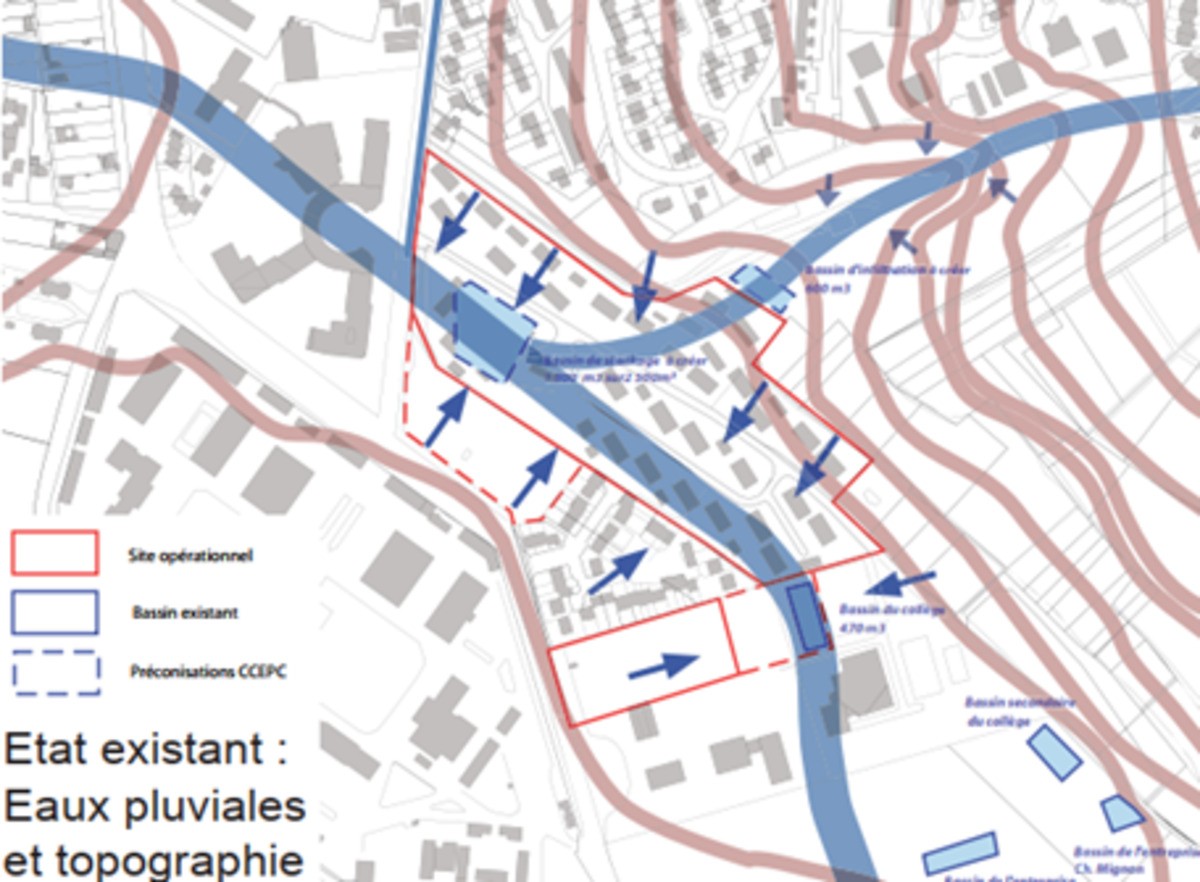
Reasons for participating in the competition(s)
Reconstruction d'un quartier à dominante de logements sociaux du fait de problèmes chroniques d'inondation.
Mise en valeur du confort de vie des habitants, au travers d'une meilleure intégration du quartier dans le tissu urbain de la ville.
Building candidate in the category





